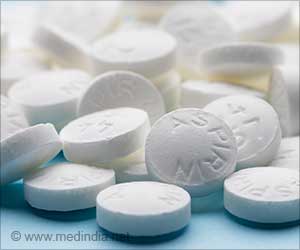Prominent rises in substance-related cardiovascular deaths were notable among women and cannabis/psychostimulant users.

Temporal Trends in Substance Use and Cardiovascular Disease–Related Mortality in the United States
Go to source) “The study results were generally consistent with what we see in our clinic while caring for patients with cardiovascular disease,” said study senior author Dmitry Abramov, M.D., a cardiologist and associate professor of medicine at Loma Linda University Health in Loma Linda, California.
‘In 65% of cardiovascular disease-related deaths, alcohol played a contributing role, with opioids, cocaine, and other illicit drugs following as additional factors. #alcohol #heartdisease #substanceabuse
3 / 3
’





“Although alcohol and opioids were the substances most associated with cardiovascular deaths, the increases in cardiovascular deaths related to stimulants (predominantly amphetamines) during the study period were particularly prominent,” he continued. “This highlights both the ongoing risk of common substances, including alcohol and opioids, and also demonstrates the need to tackle amphetamines as a substance whose contribution to CVD deaths is growing more rapidly.” The researchers reviewed publicly available data from the Centers for Disease Control and Prevention’s Wide-Ranging Online Data for Epidemiologic Research (WONDER) database to investigate death trends related to substance use from 1999 and 2019. The WONDER database aggregates death certificate data across the U.S. from the National Vital Statistics System.
The analysis found:
- The overall rate of substance use-related cardiovascular deaths increased from 9.9 per 100,000 population in 1999 to 21.4 per 100,000 population in 2019, representing an average annual increase of 4%.
- Increases in substance use-related average annual percent changes were noted across all subgroups and were pronounced among women (4.8%); American Indian or Alaskan individuals (5.4%); younger adults, ages 25-59 (5.3%); people living in rural areas (5%); people who used cannabis (12.7%) and psychostimulants (16.8%).
- 65% of cardiovascular disease deaths were related to alcohol, followed by opioids (13.7%), cocaine (9.8%), stimulants (6.5%), sedatives (4.1%) and cannabis (0.5%). The highest rate of change was noted among adults ages 25-39 (5.3%), followed by adults ages 55-69 (4.9%).
- The age-adjusted death rate was 15.2 per 100,000 in adults living in non-metropolitan/rural areas, 22.5 per 100,000 in men; and 37.7 per 100,000 in American Indian or Alaska Native adults.
“In addition, while the rates of cardiovascular disease mortality related to substance use were higher in men than women, women demonstrated larger increases during the study period. Data from prior studies have found notable increases in substance use among women over the last 20 years, and women may face unique societal risks that may contribute to the increases noted in our study,” he said. “These sex-based differences, in addition to the differences by race and ethnicity, age and living in an urban or rural community, require additional research.”
Study background and details:
- Data from the CDC WONDER database from 199-2019 included 636,572 substance use-related cardiovascular deaths. Of these, 75.6% were among men, and 70.6% of the individuals were non-Hispanic white people.
- Smoking/tobacco use was not included as a form of substance use in this study.
- The increases in substance use found in rural areas have been connected to socioeconomic vulnerabilities, access to health care and substance abuse treatment differences and will require further evaluation, the researchers noted.
Advertisement
Reference:
- Temporal Trends in Substance Use and Cardiovascular Disease–Related Mortality in the United States - (https://www.ahajournals.org/doi/10.1161/JAHA.123.030969)















